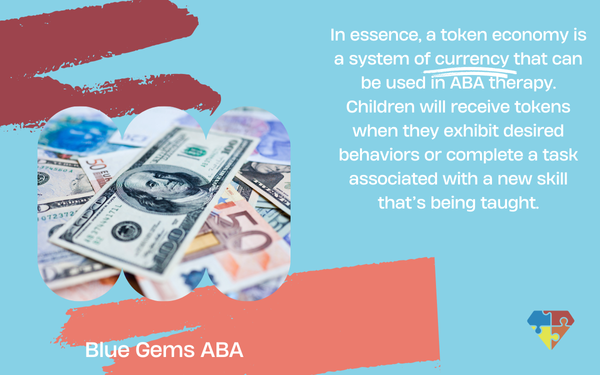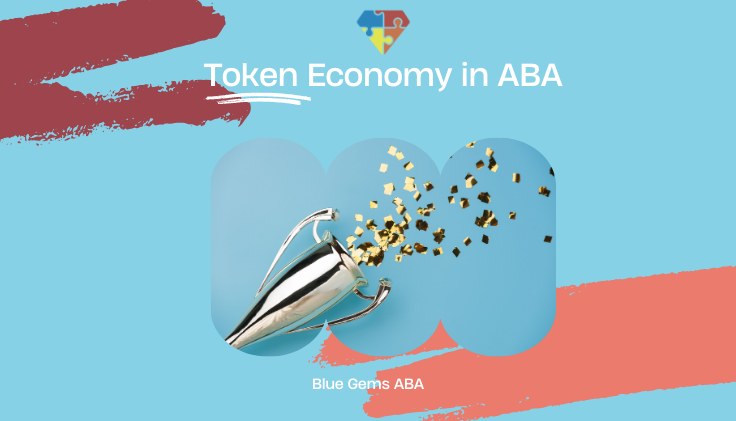Token Economy in ABA
Among the many reasons why applied behavior analysis (ABA therapy) is considered the leading treatment for children with autism spectrum disorder (ASD) is the fact that it’s customizable to each individual patient. ABA therapists have many different tools and strategies at their disposal to help patients learn and build new skills and modify certain behaviors.
One such strategy is referred to as a token economy, and it’s proven very effective at reinforcing certain desired behaviors. The token economy itself is a flexible strategy that can be adaptable and adjusted to meet the needs, preferences and responses of each individual patient.
But, how does the token economy in ABA therapy work? Let’s dive deeper into this important topic.
Table Of Contents
What is a Token Economy in ABA Therapy?
A token economy1 is a positive reinforcement reward system that is used in ABA therapy to increase behaviors that are desirable and decrease those that are negative and/or harmful. It’s one of many different strategies that therapists can use to help children with autism modify their behaviors, and it works quite well.
In essence, a token economy is a system of currency that can be used in ABA therapy. Children will receive tokens when they exhibit desired behaviors or complete a task associated with a new skill that’s being taught.

In time, the children can use these tokens as a means of barter to get something that they might want. For example, they could exchange five tokens for playing with a toy they love for five minutes.
Over time, children will learn that they will earn tokens for exhibiting these desired behaviors, and that the tokens have real value to them — since they unlock access to something they want.
| Step | Description |
|---|---|
| 1 | Identify target behaviors or skills to reinforce |
| 2 | Choose a tangible token (e.g., sticker, coin) |
| 3 | Define backup reinforcers meaningful to the child |
| 4 | Set clear rules for token earning and exchange |
| 5 | Teach the system to the child step-by-step |
| 6 | Monitor progress and adjust based on data |
What Benefits Does a Token Economy Provide?
There are numerous benefits that a token economy provides patients of ABA therapy.
First, they enhance engagement and motivation2. When children know that they will earn tokens for doing certain things — and understand that those tokens are valuable — they are more likely to repeat those behaviors or actions again in the future.

They are also structured environments in which children can operate. A token economy establishes very clear expectations as well as a reinforcement system that children with ASD can predict.
Every time they do a certain thing, they receive a token. And then they can receive the reward they want by taking those tokens they earned and exchanging them.
In this way, token economies have proven very effective at helping children not only learn new skills and modify behaviors, but maintain those acquired skills and desired behaviors consistently over time.
How Does a Token Economy in ABA Therapy Work?
The first step in setting up a token economy in ABA therapy is identifying which behaviors or skills to reinforce. It’s important that whatever is selected is something you can observe and measure.
Then, you need to select what will serve as the tokens. This could be a hash mark on a chart, a sticker, a play coin or anything else tangible that the child can see and feel.
The third step in setting up a token economy in ABA therapy is deciding on what the rewards will be that the child can choose to exchange their tokens for. These are termed backup reinforcers3, and it’s important that they are meaningful to the individual child.
It doesn’t really matter what the backup reinforcers are, whether it be extra time to play, a snack that they love or some other privilege that they enjoy. The crucial aspect is that it’s something that the child actually wants.
This fits in perfectly with ABA therapy as a whole, since all treatment plans are customized to the unique strengths and challenges of each individual patient. If the backup reinforcers aren’t strong enough in the minds of the individual patient, then the token economy system isn’t likely to be as effective as it can be.
Once the token economy is set up, therapists can begin to implement it. The system will be taught to children in a step-by-step way — just like all other aspects of the treatment — and it will be tied into clear and achievable goals.
As therapists administer ABA therapy and integrate the token economy into the plan, they will collect a lot of data to be analyzed later. This will help the ABA therapy team evaluate whether the token economy system is working as intended, or if anything needs to be updated.
Blue Gems ABA Customizes All Aspects of Treatment Plans for Children with ASD
Token economies can prove to be very effective positive reinforcement systems in ABA therapy. They work to motivate children with ASD to learn new skills and modify certain behaviors, and then maintain that progress over time.
At Blue Gems ABA, every aspect of the ABA therapy treatments we create for our patients are customized and personalized to their needs. This includes token economies and other approaches that help patients build the social, communication and daily life skills with which they commonly struggle.
To learn more, please contact us today.




